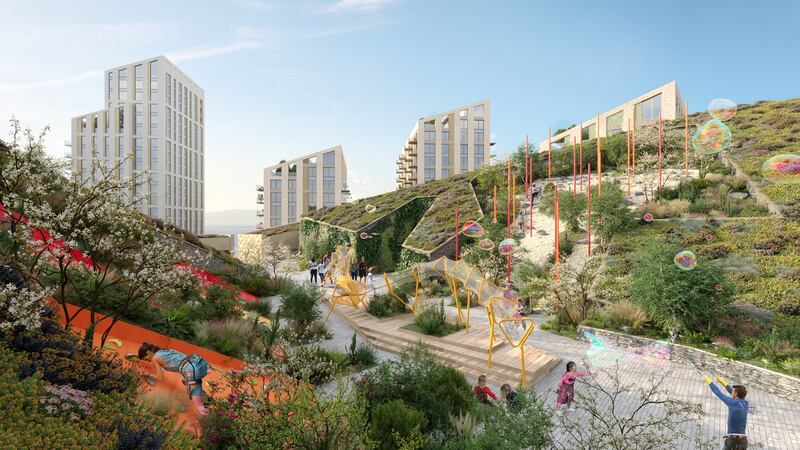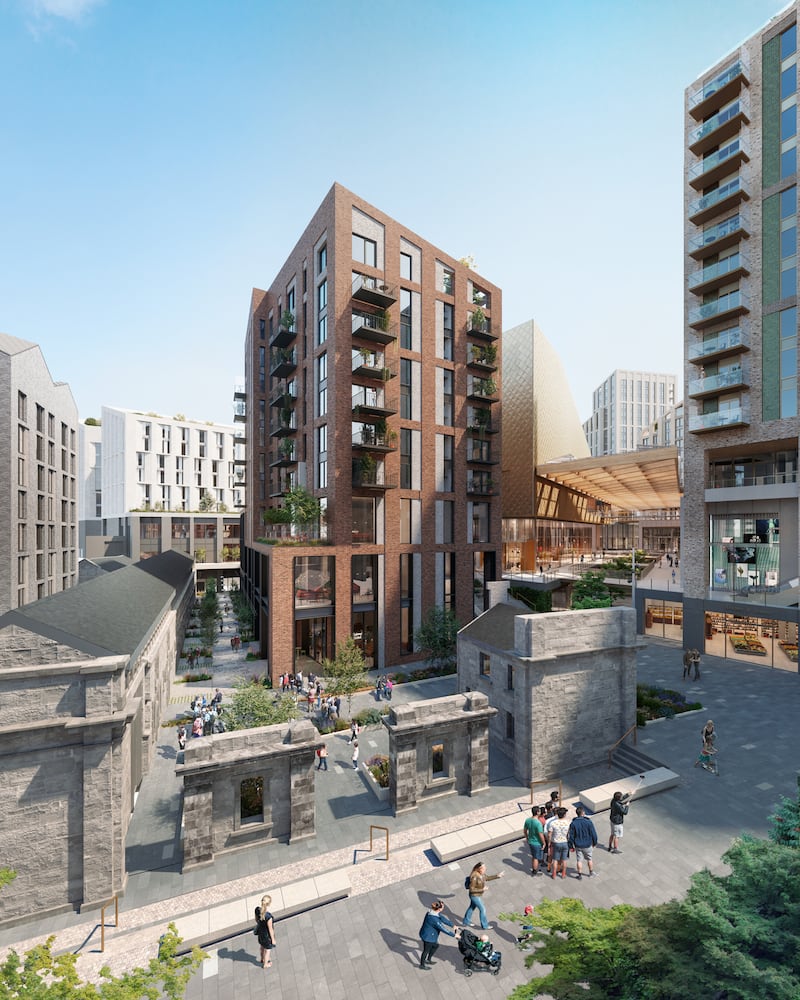The promoters of a €320 million mixed use, urban regeneration development in Galway city centre, which includes plans for a 21-storey tower, have been told to scale down the scheme significantly because of the threat it posed to “the unique character of the city”.
Galway City Council has postponed a decision on an application by Seagullpoint for planning permission for the proposed Augustine Hill development on a 3.5 hectare site adjacent to Ceannt railway station just off Eyre Square amid concern by planners about the scale of the project.
The council’s director of services, Ruth McNally, said the plans were compromised by “too great an ambition for quantum of floorspace”.

Ms McNally said the excessive scale and height of the development had “resulted in a compromised architectural design quality that would overpower the unique character of the city including the historic core”.
Augustine Hill is a joint development between CIÉ, which owns the land, Edward Capital, a development firm run by Galway developer Gerry Barrett, and UK real estate investment firm Summix Capital, which seeks to develop a total of 10 new tall buildings ranging from 10 to 21 storeys in height.
The plans provide for 378 apartments, offices, shops, a 180-bed hotel, a six-screen cinema as well as four new public squares and 11 new streets.
As planned, it would be home to 900-1,000 people when completed.
‘Excessive bulk’
Council planners have sought further information from Mr Barrett’s company, Seagullpoint, and asked it to redesign the project significantly while retaining the positive elements of its masterplan for the area.
The council said it did not believe the “tightly clustered arrangement of 10 development blocks of excessive height and mass” which were of “monolithic, uniform” design could sympathetically assimilate into the Galway skyline.
It has called for “a significant reduction in scale” of quantum, height and mass as well as a revision of the design of the tall buildings.
The council recommended that the new plans should be “of outstanding architectural design instead of how they currently present with little variety in design, finish and excessive bulk”.
It described the current plans as “lacking in the demanded elegance and beauty required for the introduction of any tall building into the composition of the city”.

City planners said the landmark 21-storey tower lacked a distinctive design and quality as well as having a poor relationship with the rest of the development.
Seagullpoint has also been requested to revise its plans for proposed works to a number of protected heritage buildings in the vicinity of Eyre Square.
The council has also sought a retail impact assessment due to concern that the proposed space for retail outlets in the development could have an adverse effect on existing shops in Galway city centre which would contravene the city’s development plan.
‘Modern new quarter’
Planners criticised the residential element of the plans claiming there is an insufficient mix as 65 per cent of apartments are designated as build-to-rent, while 73 per cent are two-bed units.
A proposed childcare facility with capacity for 81 children has also been deemed inadequate.
The Augustine Hill development has received support from IDA Ireland, the Galway Technology Centre, Galway Chamber and Galway City Innovation District.
The Galway City Business Association said it believed the project would “change Galway’s city landscape for the better”.
“It transforms and regenerates a very important part of the city that has lain derelict for decades into a modern new quarter that is mindful and sympathetic of the cityscape,” said the association’s chairman, Cormac McGuckian.
However, the Galway Environmental Network expressed concern that the enormous economic impact of Covid-19 might result in the developers not being able to proceed with the commercial aspects of the project for several years with a consequent delay to its residential elements.
It also questioned the scale of retail space given the recent closure of several large shops in the area and expressed concern that the development could “cannibalise the remainder of the city centre leaving vacant premises all over in its wake”.
Local Green Party councillor Martina O’Connor expressed regret that the council had left it to private developers to design a masterplan for the city centre, while also questioning if Galway needed another hotel and cinema.
“The masterplan has been created to maximise profits for the developer and is not considerate of the needs of the people of Galway,” she added.










